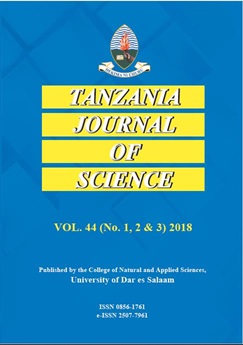Geochemical Characterization of the Paleoproterozoic Massif-Type Anorthosites from the Ubendian Belt, Tanzania
Abstract
Paleoproterozoic massif-type anorthosites occur in Southern Ubendian Belt (Upangwa Terrane) in Tanzania, mainly as mafic-plutons (meta-anorthosite and meta-gabbro) associated with ultramafic stocks and titaniferous magnetite bodies. Variably metamorphosed silicic granitoids are also recorded in the area. This article presents geochemical characteristics of metaanorthosites, meta-gabbros and the associated granitoids in order to determine their genetic links and geotectonic settings. The meta-anorthosites, meta-gabbros and meta-tonalite have indistinguishable chondrite normalized REE patterns displaying LREE-enriched patterns (e.g., (La/Sm)N = 1.97 €“6.10) and negatively sloping HREE ((La/Yb)N = 4.05 €“ 47.06) suggesting continental crustal affinity. The trace element patterns of the studied meta-anorthosites are characterized by enrichments of Eu and Sr, which is a typical signature of plagioclase dominated cumulates. The MORB-normalized trace element patterns of meta-anorthosites and metagabbros resemble the average continental arc trace element patterns. Likewise, trace element ratios (e.g., Th/Yb and Nb/Yb) Upangwa Terrane plutons point to their crystallization at a continental arc probably between 1920 and 1850 Ma.Keywords: Ubendian Belt, Massif-type Anorthosites, Trace Element Geochemistry, Tanzania


